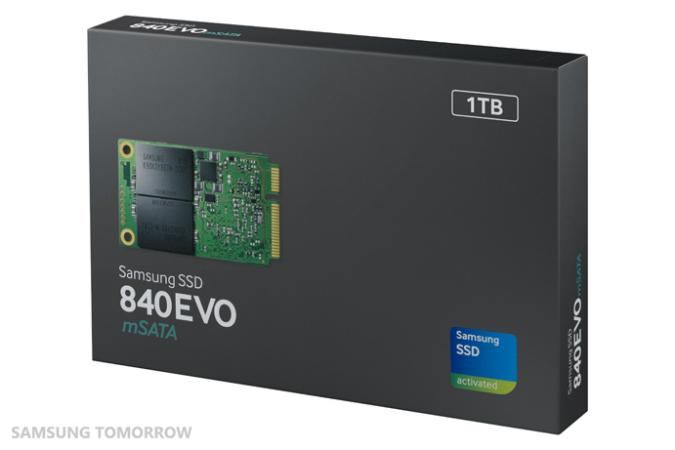
When it comes to laptops, the smaller they are, the better the package is for everyone. A lighter notebook benefits both the carrier, who certainly doesn’t want to lug around heavy gear, and the manufacturer, whose sales would likely get a boost by putting out smaller devices, as long as employing tinier tech doesn’t come with a performance hit. However, in order for tech to get smaller, internal components need to get the micro treatment. And now, Samsung has taken that concept a step further than any other company with a new piece of tech that should put smiles on the faces of ultraportable notebook fans everywhere.
Samsung just took the wraps off the 840 EVO, which is the world’s first 1TB mSATA solid-state drive (SSD0. Though SATA-based SSDs are significantly smaller than mechanical SATA drives, mSATA SSDs are even smaller – about 75 percent slimmer than their SATA counterparts, according to Samsung. When it comes to the 840 EVO, Samsung claims read/write speeds of 540 and 520 MB/s, respectively, along with a mere 3.85mm of thickness and a feather-like weight of 0.02 pounds. The 840 EVO also ships with 256-bit AES encryption.
“With the new mSATA SSD line-up offering up to 1TB of memory and an optimized software tool, we expect that consumers can enjoy high storage volume and performance on ultra-slim notebooks besides desktop PCs,” said Samsung marketing VP Unsoo Kim in a statement.
The 840 EVO line is available in 120GB, 240GB and 500GB capacities. Though an exact release date for the 1TB 840 EVO has not been revealed, the dwarfish drive will hit the market sometime “this month.”


